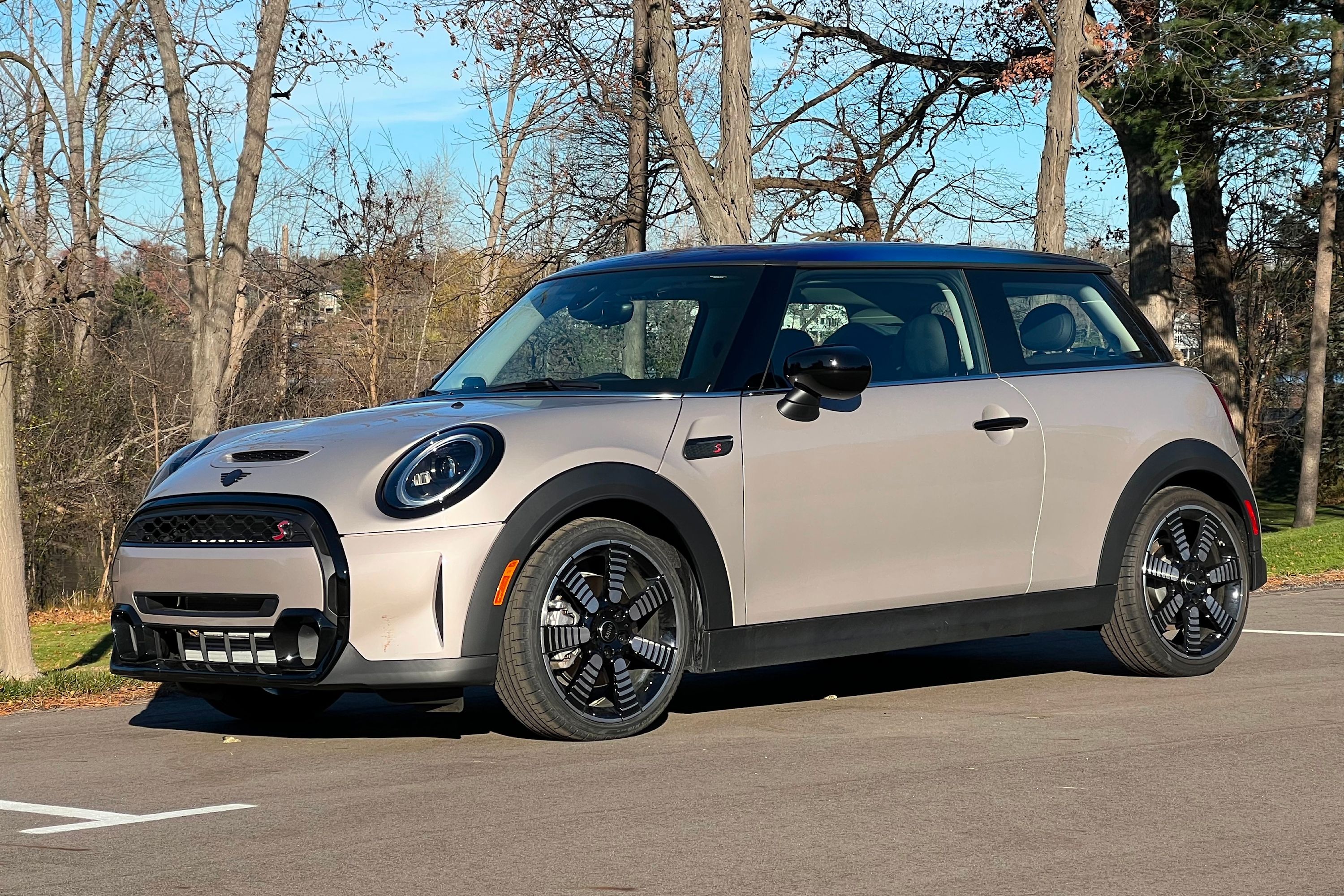
After a long teaser campaign, including a video showing the car pulling a plane, Mini's first-ever fully electric car has finally been revealed at the company's plant in Oxford, UK, just in time for Mini's 60th anniversary. It's called the Mini Cooper SE (simply known as the 'Mini Electric' in the UK), and it promises to be just as seminal as the original Mini was when it launched in 1959.
Based on the Mini 2-door hardtop, the Cooper SE looks nearly identical to its combustion-powered counterpart, but sports some key changes inspired by the Mini Electric Concept that debuted two years ago including an embossed Mini Electric logo on the turn indicator inserts, tailgate, and front radiator grill. At the front, the car's hallmark hexagonal contour has been closed since the electric motor requires very little cooling air. The eye-catching 16-inch light alloy wheels have also been lifted from the concept, which can be upgraded to a 17-inch set, while the lack of exhaust system also makes it obvious this is no ordinary Mini. A yellow decorative bar on the grille and exterior mirror caps round off the exterior changes.
Under the hood is an electric motor that's smaller and lighter than a combustion engine producing 181 horsepower and 199 lb-ft of instant torque, which should make the Mini Cooper SE immensely fun to drive. The company claims "electric drive takes the typical Mini concept of go-kart feeling into an entirely new and fascinating dimension." Power is sent to the front wheels through a transmission with single-stage configuration and integrated differential. With this setup, the Mini Cooper SE accelerates to 37 mph from a standstill in just 3.9 seconds. 0-62 mph takes 7.3 seconds, while top speed is limited to 93.2 mph.
A 32.6 kWh lithium-ion battery is installed under the floor providing a range of 146 to 168 miles, which Mini points out is calculated "based on the new WLTP test cycle and adapted to NEDC for comparison purposes." Inevitably, this has increased the weight, but the electric model is only around 319 pounds heavier than the Mini Cooper S 2-door hardtop with Steptronic transmission. The battery's location also means no sacrifices have been made to cargo space. Like the regular Mini, you still get 211 liters of luggage volume under the tailgate, which increases to 731 liters when the rear backrests are folded down.
The charge port is located above the right-hand rear wheel where the fuel cap is normally located on the conventionally-powered Mini. The car can be charged at a household 120-volt socket, wall-mounted charger or public charging stations, while fast direct-current charging is possible at up to 50 kW.
To retain the Mini's agile handling, the Cooper SE adopts a suspension setup with single-joint spring strut at the front, and a multilink rear axle that is "unique within the competitive field and electromechanical steering" guaranteeing "maximum ride stability, steering precision, and spontaneity when changing direction."
Compared to the Cooper S, the electric Mini's center of gravity is at least 1.18 inches lower, while optimum weight distribution helps the Cooper SE "achieve a level of cornering dynamics that is unique within the small car segment."
Standard equipment includes LED headlights, a 6.5 infotainment screen with navigation, two-zone automatic air conditioning, heating with heat pump technology, auxiliary heating, electric parking brake and Connected Navigation. A larger 8.8-inch touchscreen is also optionally available.
Three trim levels will be available in the US with specific exterior finishes, light-alloy wheels, seat upholstery and interior fittings. No word on US pricing or availability yet, but production of the Mini Cooper SE will take place at the company's Oxford plant in late 2019, with first deliveries starting in the UK in March 2020.
